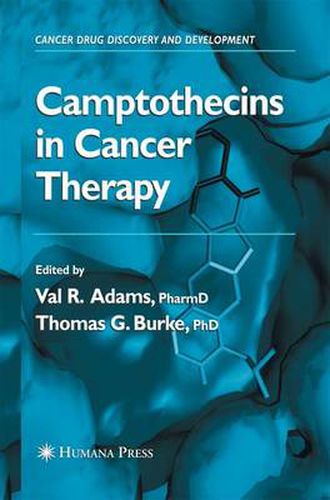Readings Newsletter
Become a Readings Member to make your shopping experience even easier.
Sign in or sign up for free!
You’re not far away from qualifying for FREE standard shipping within Australia
You’ve qualified for FREE standard shipping within Australia
The cart is loading…






This title is printed to order. This book may have been self-published. If so, we cannot guarantee the quality of the content. In the main most books will have gone through the editing process however some may not. We therefore suggest that you be aware of this before ordering this book. If in doubt check either the author or publisher’s details as we are unable to accept any returns unless they are faulty. Please contact us if you have any questions.
A critical review our current understanding of camptothecins, their shortcomings, and of the possibilities for improving their clinical performance. The authors discuss new camptothecin analog development, drug delivery issues for optimizing their anticancer activity, and their potential use in a variety of different cancers. Additional chapters describe what is known about the biochemistry, the pharmacology, and the chemistry of the camptothecins, including the mechanism of topoisomerase and how camptothecins poison this enzyme, the use of animal models in defining the anticancer potential of camptothecins, and the question of camptothecin resistance.
$9.00 standard shipping within Australia
FREE standard shipping within Australia for orders over $100.00
Express & International shipping calculated at checkout
This title is printed to order. This book may have been self-published. If so, we cannot guarantee the quality of the content. In the main most books will have gone through the editing process however some may not. We therefore suggest that you be aware of this before ordering this book. If in doubt check either the author or publisher’s details as we are unable to accept any returns unless they are faulty. Please contact us if you have any questions.
A critical review our current understanding of camptothecins, their shortcomings, and of the possibilities for improving their clinical performance. The authors discuss new camptothecin analog development, drug delivery issues for optimizing their anticancer activity, and their potential use in a variety of different cancers. Additional chapters describe what is known about the biochemistry, the pharmacology, and the chemistry of the camptothecins, including the mechanism of topoisomerase and how camptothecins poison this enzyme, the use of animal models in defining the anticancer potential of camptothecins, and the question of camptothecin resistance.